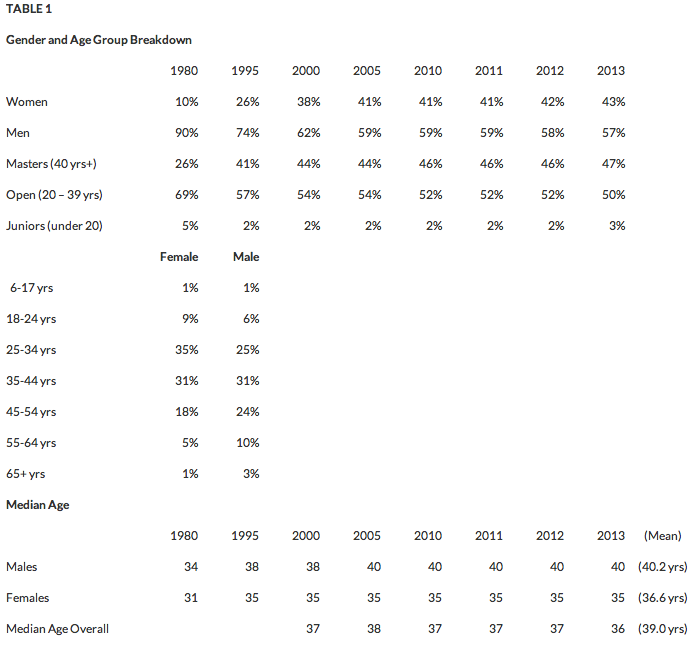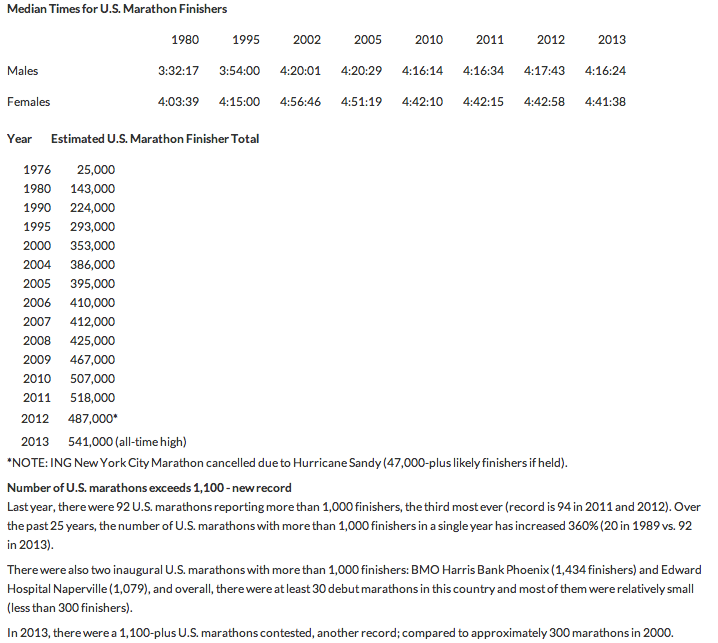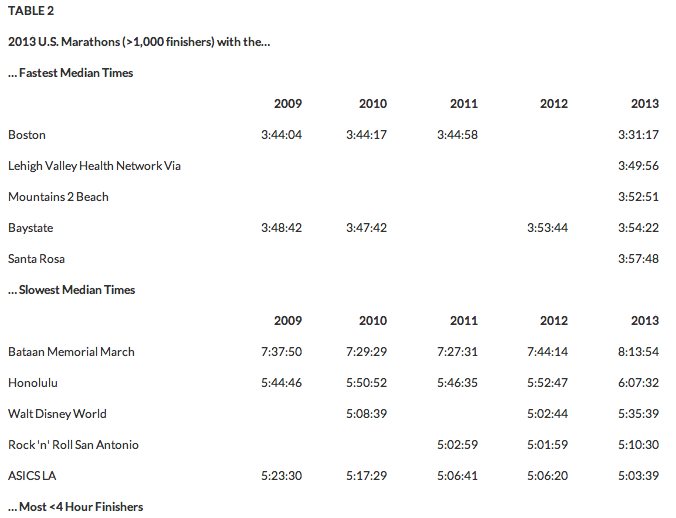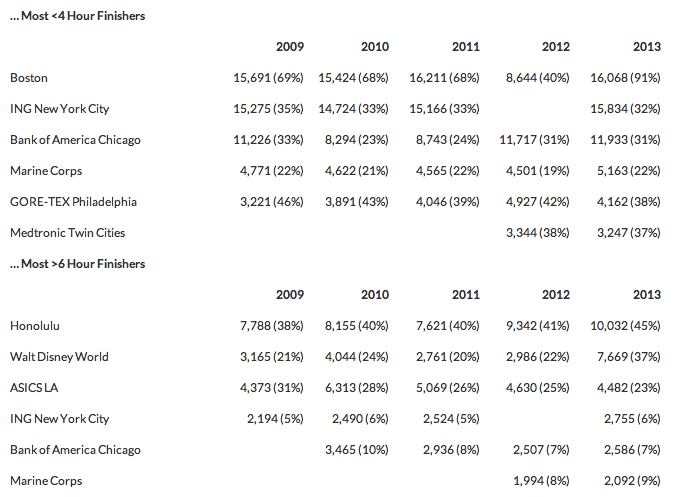Despite several cancellations due to weather and the Boston Marathon terror attack, 2013 was another record year for the classic distance with more than 1,100 marathons run across the country, according to Running USA's annual Marathon Report. The races wound up generating 541,000 finishers with a breakdown of 57 percent men (308,400, all-time high) and 43 percent women (232,600, a new high overall and percent) and 47 percent Masters 40 and older (254,300, also a new high overall and percent).
Last year, we reported that the estimated number of U.S. marathon finishers had declined from a record high 518,000 finishers in 2011 to 487,000 in 2012 (a 6 percent decrease), but like 2001, most of the decline was attributed to a unique situation; in 2001, it was post-9/11 travel impacting fall marathons, and in 2012, the ING New York City Marathon, the world's largest 26.2 mile race with 47,000-plus finishers, was cancelled due to the destruction of Hurricane Sandy. If the NYC Marathon had been held in 2012, there is no doubt that the 2012 overall marathon finisher total would have exceeded the 2011 record of 518,000 marathon finishers.
2013 was also another year of unlikely perils impacting U.S. marathons. On April 15, the Boston Marathon's finish line area suffered an act of terror, 4 hours, 9 minutes, 43 seconds into the race. In addition, two large-scale December events, the MetroPCS Dallas Marathon and St. Jude Memphis Marathon were cancelled due to inclement weather, both the same weekend. The result of those unable to finish the Boston Marathon as well as event cancellations was approximately 13,000 fewer marathon finishers for 2013 in those events. But the return of the New York City Marathon (left, PhotoRun) with its record 50,266 finishers helped push the aforementioned 2013 number to a new high.
Overall, there was a negligible -0.7 percent decrease in finishers from the same 372 U.S. marathons for 2012 and 2013 (435,472 vs. 432,577). NOTE: because of the terror attack towards the end of the 2013 Boston Marathon, 2012 and 2013 finisher numbers for said marathon were not included in the same marathon comparison. There was a 1.6 percent increase in finishers from the same 388 U.S. marathons for 2011 and 2012 (464,122 vs. 471,595).
Since 1990, there has been more than a 140 percent increase in U.S. marathon finishers (224,000 vs. 541,000) and over the past decade, a 40 percent increase (386,000 vs. 541,000). See finisher snapshot table further below.
The following tables and lists represent a summary of the demographics and stats and trends for U.S. marathons and worldwide rankings. Per the tables below, U.S. marathon demographics – gender, age group, median age and median time – have remained essentially static in recent years.


















